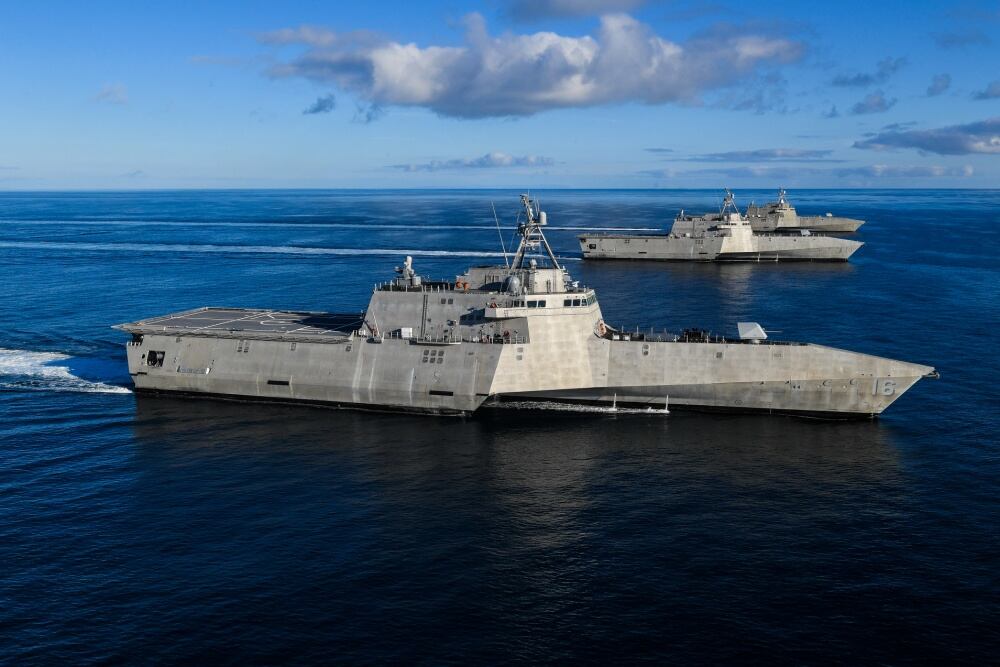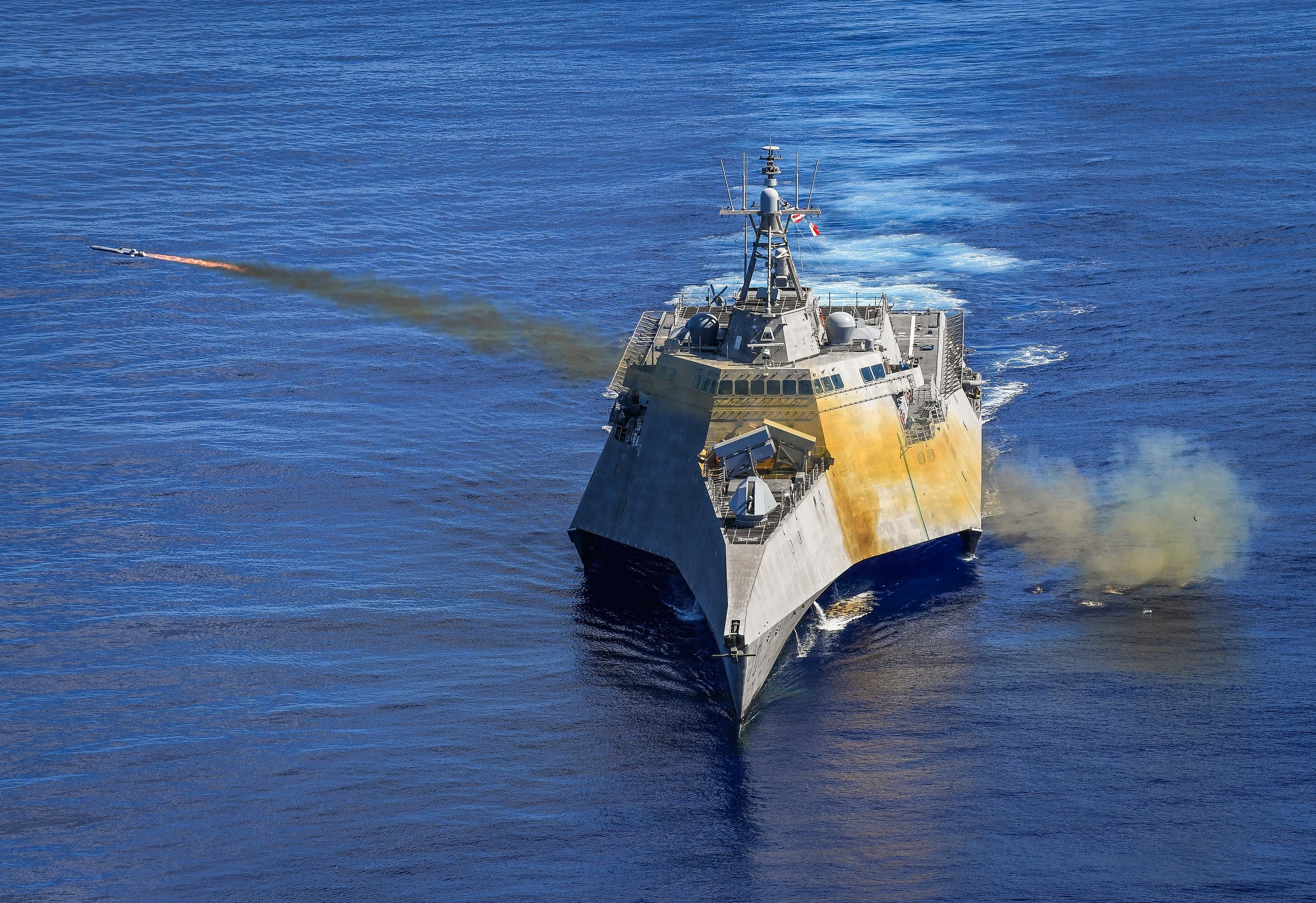As the Navy seeks to improve the self-sufficiency of its littoral combat ships, the service is moving to have sailors conduct nearly all the maintenance for the vessels in the near future, according to Navy officials.
The LCS fleet was originally envisioned as having a small crew, and the Navy would partner with contractors to fulfill nearly all of the ships’ maintenance needs.
But like much with the LCS fleet — from survivability to cost and mission modules that never materialized — that maintenance system encountered challenges.
Flying contractors around the world to perform routine maintenance on the ships left crews without the knowhow to fix even basic issues on their own, a 2021 Government Accountability Office report found.
And because the original manufacturers were the only ones who knew how to fix certain ship systems, a lack of available fixers also risked imperiling LCS maintenance schedules, the government watchdog found.
RELATED

But now, the Navy is seeking to put more of this maintenance work in the hands of sailors by standing up so-called “Maintenance Execution Teams” and tweaking how such vessels are manned, officials told reporters this week.
Sailors assigned to the maintenance teams work for regional maintenance centers and deploy to assist LCS crews with routine maintenance and preventative maintenance availabilities. They also receive training from the original equipment manufacturers to conduct some of this work.
Before the reforms, contractors were conducting approximately 95 percent of maintenance on the Independence-variant LCS as of 2020.
Today, the Navy’s maintenance teams are completing more than 60 percent of such work, according to Capt. Marc Crawford, commodore of Littoral Combat Ship Squadron 1 based out of San Diego.
These teams, which Crawford described as a “game changer,” are slated to take on even more maintenance responsibility in the future.
“In the next year to come, our goal is to get them to where the sailors are executing 95 percent of the maintenance and the contractors are going to only execute 5 percent,” Crawford told reporters Tuesday. “It’s all about building the self-sufficiency into the capability and capacity of the sailors on board, and then leveraging the reach-back capability with the [maintenance teams].”
Crawford noted that this new maintenance system contributed to the Independence-class LCS Charleston’s recent 26-month deployment — the longest LCS deployment to date. The ship, which returned to San Diego in June, conducted patrols in the South and East China seas, and also became the first LCS to conduct mine countermeasures training internationally.
“We can’t deploy ships like we did with Charleston for 26 months without the enabling capability that the expeditionary maintenance execution teams provide,” Crawford said.
Similar maintenance trends are at play within the Freedom-class variant. Currently, 75 percent of maintenance for these vessels is conducted by the ship’s own crew, according to Capt. Mark Haney, commodore of Littoral Combat Ship Squadron 2 based out of Mayport, Florida.
One key aspect facilitating the self-sufficiency of the Freedom-variant ships has been shifting to a single crew concept, according to Haney. This is a departure from the dual crew, “blue-gold” model where crews rotate on and off the ships every four or five months.
The single crew has allowed Haney’s team to follow more traditional Navy deployment schedules, while also bolstering manpower to the deckplates, he said. Today, more than 90 sailors are manning the Freedom-variant ships — up from approximately 40.
“I’m moving forward with providing them tools and the training that we would give a traditional warship to be able to operate and have the same repair capacity on board, the same maintenance on board as we see on our traditional combatants,” Haney told reporters Tuesday. “This is definitely an initiative that we’re working towards strongly.”
Haney noted that the Milwaukee, Detroit and Little Rock — all recently decommissioned — were single-crewed in the last year and operated at the maximum operability limits for the LCS. As a result, Haney said those three ships saw enhanced reliability and self-sufficiency.
Most of Crawford’s Independence-class ships are still operating on the dual crew structure, and that will remain for a few more years. Plans are still in development to transition the Independence-variant to a single crew, he said.
Despite the fact that the ships are expected to serve for 25 years, multiple Freedom-variant vessels were decommissioned early this year — including the Milwaukee with less than a decade of service and the Sioux City with less than five years under its belt.
RELATED

The Navy announced in 2022 that it wanted to cut these ships to fund other priorities, as the Freedom-variant class of ships suffered a class-wide defect that would require replacing aspects of the combining gear transmission. On top of the cost, service officials and Congress have echoed concerns that the ships would not bring much to a naval battle against another nation, such as China.
Navy Times’ sister publication, Defense News, reported in October that decommissioning the ships ahead of schedule amounts to a nearly $7 billion loss, based on data from the Congressional Budget Office.
Haney said Tuesday that of the four Freedom-variant ships decommissioned in 2023, three of them were operating essentially until the moment they were mothballed. For example, the Detroit and Little Rock each completed deployments to the 4th Fleet in 2023, where they conducted counter-drug interdiction and other missions.
“The Navy and the nation and the fleet commanders needed those assets for as long as we could keep them operational,” Haney said. “So for the remainder of the ships that the Navy decides to keep, there’s certainly a mission for them.”







